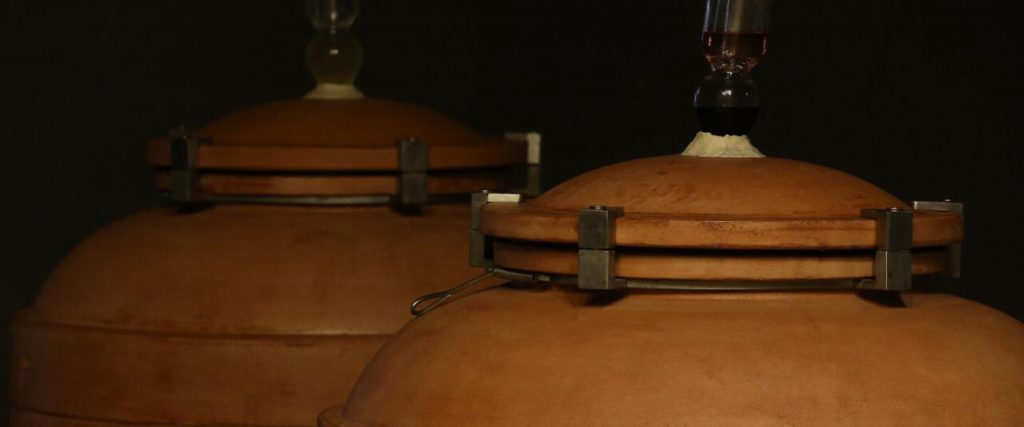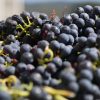Yes, amphorae, the same things the ancient Greeks used, what archaeologists researching the origins of wine are now finding in neolithic era caves and settlements. These venerable recipients offer proof that drinking fermented grape juice, far from being a recent phenomenon, has been a major, and delicious part of our diets since prehistoric times.
Everything about the Wines Made in amphorae from Argentina
Amphorae may seem something from the distant past but they have become a very contemporary part of new trends in winemaking linked to the always controversial search for purity, honest production practices and non-interventionism. These ideas have driven winemakers to look to the past in their quest for pristine, original flavours.
And so amphorae are back on the scene.
Far from speaking to a kind of ludditism, oenologists and other specialists have applied their scientific knowledge to show that using amphorae offers several tangible benefits: for one thing, clay allows the wine to breath, just like a barrel but at a different pace and without affecting the flavour. Then there’s their size; they need to be relatively small because of the fragility of the material and so are able to maintain a stable temperature. These and other factors result in wines that offer a different range of flavours.
And so the past has returned to offer a solution that will delight those at the forefront of the new flavour movement.
Georgia is the new Bordeaux
Twenty years ago, the Meccas of world viticulture were Médoc and Saint Emilion with their precise winemaking traditions that achieved a balance between tradition and modernity. Today, however, many oenologists are looking to replicate the more rudimentary practices found in the wine regions of the Caucasus where wines are made in Quevri (amphorae), just as they were in ancient times.
Those who choose to make wines in amphorae are thus also looking to new horizons for their inspiration.
For example, Eugenia Luka, Marketing Manager at Finca Sophenia, recently presented Es’Vino, a personal project involving the production of wines made in amphorae in partnership with the winemaker Matías Michelini. ‘We wanted to extract the purest qualities of Gualtallary and Matías convinced me to bet on clay amphorae. In both cases we achieved a different expression from anything else found in Gualtallary. Both the Semillón and the Malbec present extremely pure profiles with very interesting textures in which the typical acidity of the terroir is combined with oxidative traces to make for an enticing point of difference.’
Another producer who has experience with clay containers is Matías Riccitelli, who recently launched Kung Fu, a line of wines with no added sulphites. The white blend is made in amphorae. ‘It took us a while to learn how to use the material, which allows the wine to oxygenate significantly. That’s why I prefer it for the whites and lighter reds because they’re they ones in which you can best appreciate the results. The truth is that I’m fascinated by the character it lends the wines.’
But it’s not just small producers who are getting in on the act. Sergio Casé, a winemaker at Trapiche in charge of limited editions and unusual styles for the historic Mendozan winery, is also enthused. ‘In 2018, we started to make an orange Semillón wine in amphorae,’ he says. ‘After macerating for 12 months in skins, it turned out to be a very original wine; tense and flavourful, that encouraged us to keep experimenting.’ That first attempt can be enjoyed at the new wine bar in the winery’s garden.
Right now, white, orange and red versions of Argentine amphorae wine are attracting attention in different markets in limited editions that sell out in a short period of time. Stand out examples include Zuccardi The Amphora Project Malbec, an exceptional red that came about by chance; Altar Uco Edad Media 2016, which combines barrel and amphora ageing; On the Road Malbec, from the L’ Orange experimental winery; Otra Piel Chardonnay from Michelini i Muffato; Amansado Pedro Ximenez, from Ánfora, which is also aged under flor to create an authentic sherry style profile;
Other heavy hitters in the wines made in amphorae from Argentina include Chakana Estate Torrontés Maceración Prolongada, an orange wine, and La Marchigiana Criolla, made by Catena Zapata in containers inspired by Georgian Quevri, which spends a long time macerating in lees.
Looking to go back to the future, new generations of Argentine winemakers are once again unleashing their creativity to surprise us with original wines.



